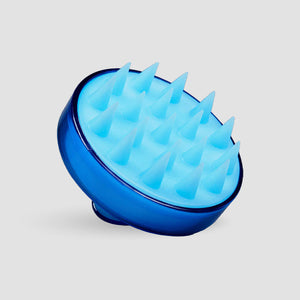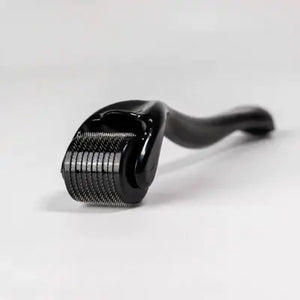
Hair transplantation as a solution for folliculitis decalvans?
Anyone suffering from folliculitis decalvans knows how serious the consequences can be. Hair loss, inflamed hair follicles, and scarring are just three of the possible effects of the disease. But how can the condition be treated? Is a hair transplant a solution, or even possible?
Hair transplantation as a solution for hair loss caused by Folliculitis Decalvans
Alopezia Areata, or hereditary hair loss, is the most common form of hair loss worldwide. Statistically, it affects approximately one in two men and around 40% of women. Another common form of hair loss is alopecia areata, or circular hair loss. Depending on the severity of the condition, hair loss is entirely reversible. If bald patches remain, they can sometimes be filled with a hair transplant. However, there are also relatively rare conditions that lead to irreversible hair loss. One of these is folliculitis decalvans, which is a type of scarring alopecia. But what exactly helps those affected by hair loss ? What options are available?
What is Folliculitis Decalvans?
Simply explained, this rare disease is an overreaction of the hair follicles to staphylococci. Initial symptoms are nodules and thickenings of the skin that form on the scalp and the affected areas of skin. Folliculitis decalvans can occur on any hairy part of the body, but the scalp is most commonly affected. As the disease progresses, the affected areas of skin, the underlying hair follicles, begin to become inflamed. The result is hair loss. Irregular bald patches remain, the edges of which are scarred. As if this condition weren't bad enough, it's quite possible that so-called tufts or brush hairs form at the edges of these scarred areas. This means that several hairs grow from one opening in the skin, usually around five to ten. These, in turn, can form a portal of entry for the staphylococci, which can further worsen the inflammation. For this reason, all tufts of hair should be surgically removed from the scalp. The pustules that develop during folliculitis decalvans can be intensely itchy or even painful – but not for everyone affected. Most people, however, find the crusts that form on the pustules, which then fall off over time, very unpleasant. Men are more commonly affected by the disease than women. Nevertheless, women also suffer from the hair loss that comes with this condition. Unfortunately, women are still more defined by their hair than men. Generally speaking, the condition occurs relatively frequently in early adulthood.
Causes of the disease
What exactly causes decalvan folliculitis is still not fully understood. However, it is certain that Staphylococcus aureus—a bacterium—plays a central role in this disease.
Is there a treatment option?
Yes and no. But that's also because the causes are still unknown. Treatment is largely limited to combating the symptoms. Two therapies are often combined. Germ-reducing shampoos are used on the scalp. These should be applied daily to contain the inflammatory reactions on the scalp. In addition, antibiotic therapy is initiated, for example clindamycin and rifampicin, to get the staphylococci "under control" again, so to speak. Other medications or zinc-containing supplements can also be given to reduce the inflammation. The treatment of scarring alopecia is very lengthy in most cases because the disease is recurrent, meaning it can flare up again and again.
Is a hair transplant even an option for folliculitis decalvans?
In principle, a hair transplant is possible for folliculitis decalvans. Many sufferers – whether men or women – suffer greatly from the bald patches left on their scalp. Beautiful, full, and healthy hair still symbolizes youthfulness and vitality. However, it is extremely important that the condition of the scalp remains stable over a longer period of time and that the disease has completely healed. Folliculitis decalvans usually occurs in phases. This means that even if you are now symptom-free and are planning a hair transplant, it is better to wait a few more weeks, or even better, a few months. Otherwise, there is a real risk that the transplanted grafts, the follicles, will be attacked by staphylococci again and subsequently fall out. The hair transplant would then have been completely in vain. Another factor for a successful hair transplant with this form of hair loss is that there must still be enough hair in the donor area. Unlike alopecia areata, for example, folliculitis decalvans can also occur in the hairline, and other hairy areas can certainly be affected. Incidentally, the FUE method is the technique of choice for this condition. Unlike the FUT method, the donor area is not limited to the hairline. Hair can also be transplanted from other areas of the body to help you regain beautiful hair. However, the basic requirement is that these areas are not also affected by the disease. Be sure to inform the transplant clinic that you suffer from scarring alopecia if you are considering a hair transplant. A reputable provider will first assess the condition of your scalp (this can also be done very well with photos) and, of course, also ask you how long you have been symptom-free. It is then still at the doctor's discretion whether to recommend a hair transplant. As already described at the beginning, folliculitis decalvans occurs in phases. This means that it could easily take months before the condition flares up again. One alternative you might want to consider is micro hair pigmentation . This is purely a cosmetic "procedure" - a type of permanent makeup for the hair. During hair pigmentation, the pigmentist inserts tiny dots of color into the scalp. Viewed as a whole, these dots look like a short hairstyle. This way, the bald patches left behind by scarring alopecia can at least be visually corrected. First, seek professional advice and then get a personalized quote that is perfectly tailored to the treatment method that is right for you.




















